
Today, most households or commercial spaces have central air conditioning, which provides cooling to large areas. But, for rooms, there are alternates like window air conditioners, wall air conditioners, or portable air conditioners. These air conditioners extract the heat from inside your home and move it outside.
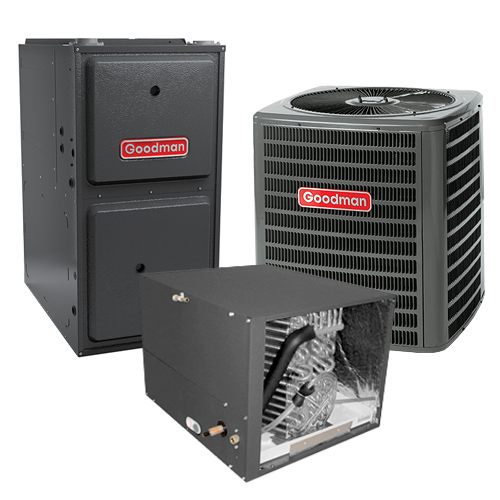
Gas-electric air conditioners are the most common heating and cooling systems, combining a gas furnace and an electric air conditioner.
This arrangement is called a "split system," which means that the furnace with the coil is inside the home while the condenser is outside.
The air conditioner uses the furnace's blower to distribute cool air when it's hot outside, while the furnace heats the home with natural gas or propane fuel when it's cold outside.
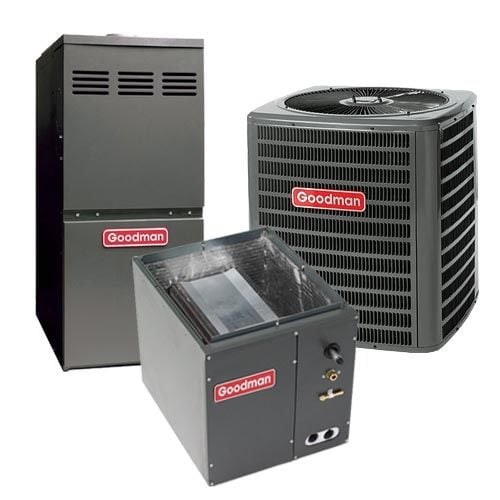
Paying too much to stay warm with natural gas? Save money with a dual-fuel split air conditioning system. This system uses a heat pump with a gas furnace, unlike other systems.
The indoor unit on this system uses a gas furnace with a coil instead of an air handler, while the outdoor part of the system uses a heat pump.
The heat pump is used until the outside temperature drops to a certain degree. Once below that set outdoor temperature, the air conditioning system switches from electric to gas (natural or propane) to heat the inside of your home.
Using a dual fuel split air conditioning system is a cost-efficient way to heat your home because it limits unnecessary gas heat usage from the heat pump in warmer climates.
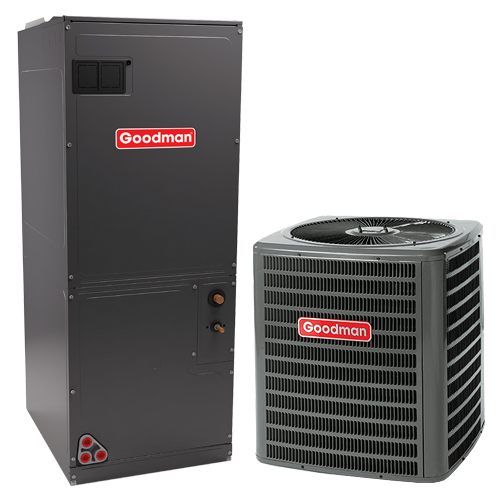 Heat pump fuel systems are set up similarly to air conditioner split systems. Just like the air conditioner, it cools on hot days. Yet, it also has the ability to warm your home on cool days. By using electricity, the heat pump condenser transfers heat energy from a heat source to a heat sink.
Heat pump fuel systems are set up similarly to air conditioner split systems. Just like the air conditioner, it cools on hot days. Yet, it also has the ability to warm your home on cool days. By using electricity, the heat pump condenser transfers heat energy from a heat source to a heat sink.
The heat pump air conditioning system is more cost-efficient than other electric systems like space heaters or electric furnaces, which need to create heat.
The most frequent setup for this air conditioning system is a heat pump with an indoor air handler. The air handler contains a blower and a coil in one cabinet. When living in warmer climates, the heat pump fuel systems is an ideal choice. But, it is not uncommon to see them in colder climates as well.
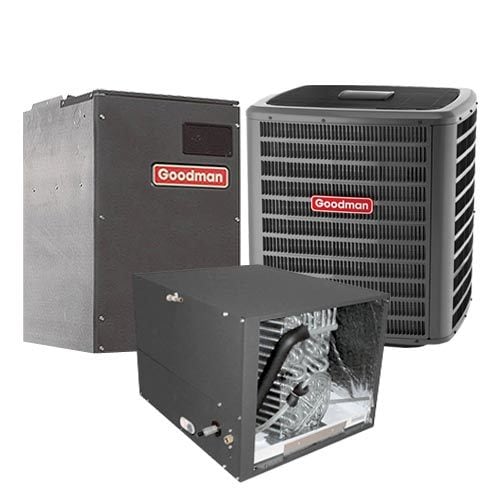
An air conditioner split system is a preferred air conditioning system used in warmer climates because it is used mainly for cooling.
This air conditioning system also has an indoor and an outdoor unit.
Additionally, there is also a compressor in the outdoor unit, which compresses a gas called "refrigerant." Once compressed, the gas is transferred into the air conditioner's condenser coil-cooling and releasing air into the air handler, which circulates the air through your home.
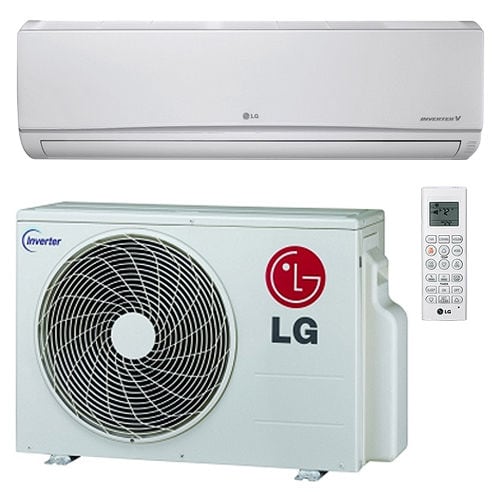
Ductless air conditioning systems are a great alternative to installing ducts throughout the home.
These systems are highly efficient at heating and cooling specific zones in your home and don't require air ducts-making them useful for homes without ductwork or space for wall/window air conditioners.
Ductless air conditioning systems consist of an outdoor condenser and an indoor air handling unit, these indoor air handler units are also called "heads," and are connected by a small, durable electrical and refrigerant lines.
The indoor air handlers are normally mounted high on a wall or on the ceiling. These air conditioning units cover a 3-inch hole in which the refrigerant line passes through from the outside unit. These ductless air conditioners are very efficient and have the ability to cool more than one room-dual zone, tri-zone, quad-zone, and even multi-zone unit systems are available.
From one outdoor air condenser, you can power up to eight indoor air handler components by installing a heat pump. Each indoor air handler zone is controlled separately, allowing you to control the temperature in each room individually.
You also have the ability to mix and match these ductless air conditioning systems. For example, you can use a ceiling-mounted air handler in one room and a wall-mounted air handler in another.
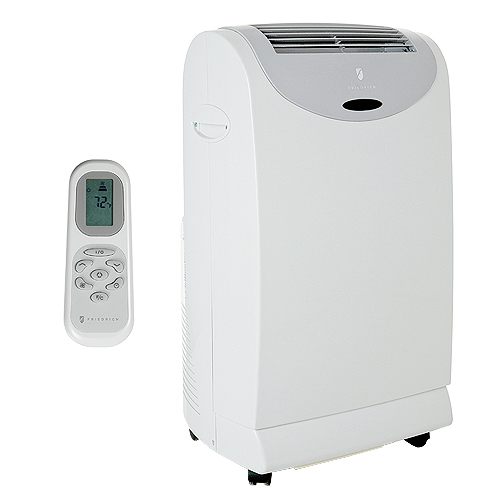
Portable air conditioning units are a simple way to cool a room without dealing with a bulky window or wall unit. Portable air conditioners can be easily moved from room to room and don't need to be installed.
This air conditioner works by blowing cold air through the front while passing hot air through the back. To remove the warm air from the room, a vent hose is included with the product and is installed in the back of the portable air conditioner.
A portable air conditioner is also shipped with a window vent kit, which connects to the air conditioner's vent hose to guide the warm air out the window.
The window vent kit can be expanded to fit larger windows or modified for smaller ones. Portable air conditioners are a great way to cool a specific area without having to change the thermostat.
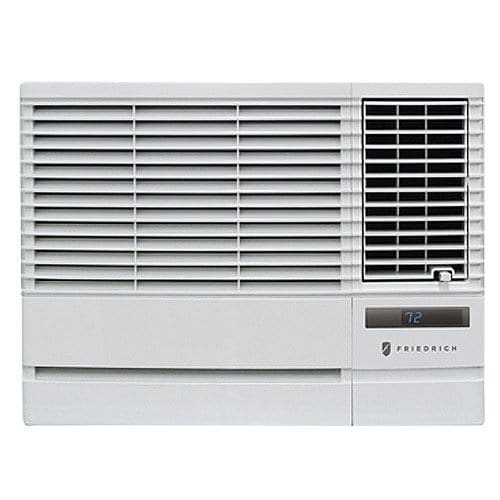
When you switch a window air conditioner on, the thermostat control sends volts of alternating current to the compressor and the fan motor.
The air conditioning compressor acts like a pump and compresses the gaseous refrigerant into the condenser coils located near the back of the air conditioner-where the gas is then condensed into a hot liquid.
The condenser coils dissipate the heat as the liquid travels through them. Once the refrigerant has passed through the condenser coils and the capillary tubes, it travels to the evaporator coils located near the front of the air conditioner. As the refrigerant liquid travels through these coils, it rapidly expands into a gas which makes the coils cold. The gas flows through the coils to a suction line attached to the compressor, from where the compressor then converts the gas back into a liquid, and the cooling cycle continues.
At the same time, the air conditioner's fan motor rotates a blower wheel, which draws in air to be cooled by the evaporator coils before recirculating it back into the room. This motor also operates the condenser fan blade. The air conditioner's fan blade blows outside air through the condenser coils to cool them. It is normal for water to accumulate in the bottom of the air conditioner when the appliance is running.
A slinger ring on the condenser fan blade picks up this water and sprays it on to the condenser to help disperse the heat. To prevent the water from dipping into the room, the window air conditioner should be tilted back when installed.
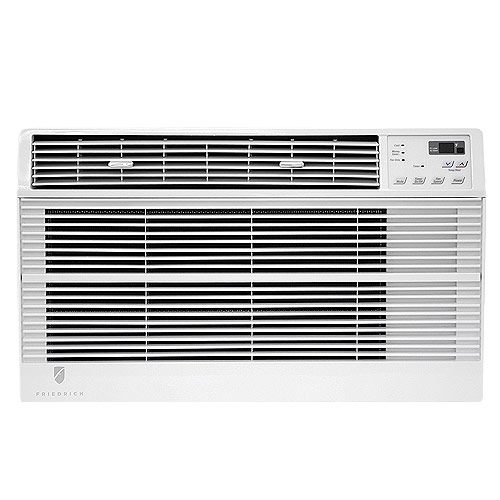
Wall air conditioners have a lot of the same qualities as window air conditioners. These units require an opening through the wall; they are permanently fixed when installed.
Unlike window air conditioners, wall air conditioning units do not prevent full usage of the window and should be installed by a professional.
Once the wall air conditioner has been installed, it is then permanently sealed. The purpose of sealing the air conditioner is to properly prevent air from leaking indoors or outdoors.
Wall air conditioners are specifically designed for the wall and have unique air and moisture rear-ventilation. These air conditioners are physically bigger and have greater cooling capabilities. For this reason, they should not be installed in a window.
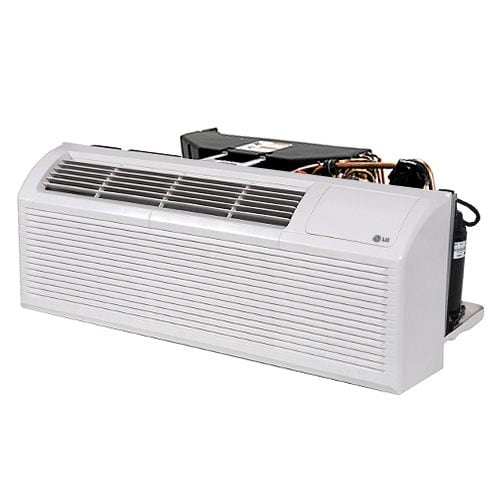
A PTAC is a packaged terminal air conditioner. These units are all-in-one, meaning that there is not an outside condenser.
These packaged terminal air conditioners are mostly found in apartments and hotels.
Many of the air conditioners are designed to install in the wall, having the vents and the heat sinks inside as well as outside.
One characteristic of these units is that condensate drain piping is not required. Instead, a slinger ring on the condenser fan blade picks up this water and sprays it on to the condenser coil to help disperse the heat.
NEXT: View and Shop All A/C Systems